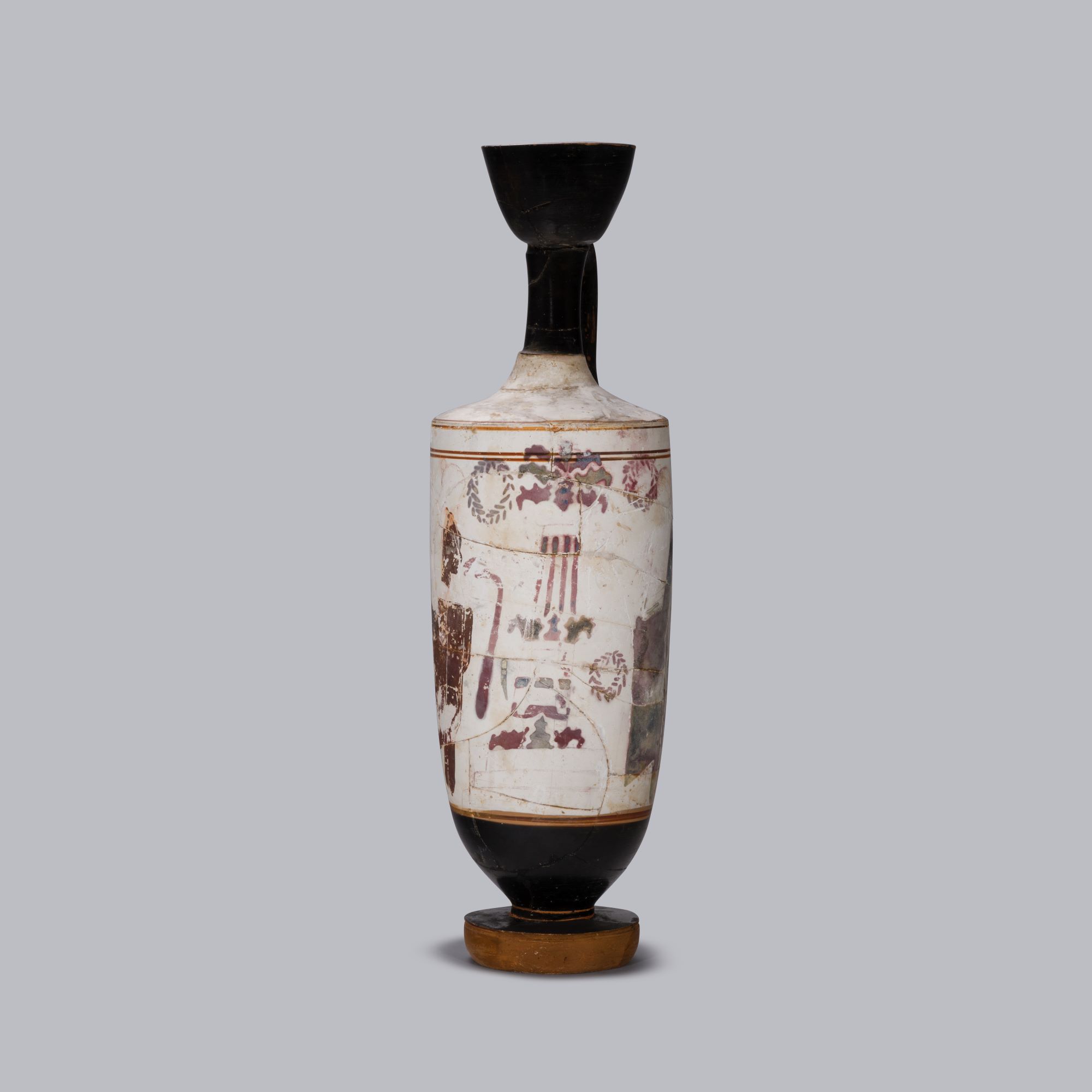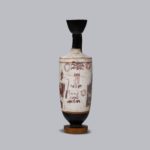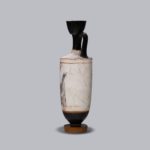
Lekythos [Gr35]
Athenian White-Ground, c. 430 BC
Painted terracotta (h. 38.6 cm, d. 11.1 cm)
Mourners at a tomb decorated with wreaths and ribbons. On the left a woman holding a basket, on the right a youth.
White-ground vases were often used in funerary contexts and are frequently decorated with scenes of mourning and images of tombs. This lekythos (oil flask) shows a woman and a youth bringing gifts to decorate a tomb. The grave stele in the centre is hung with bands of cloth in red and green, branches of acanthus and wreaths. On the left, a woman brings a strip of red cloth, hanging from a basket. She wears chiton and a brown himation, with her hair in a krobylos (gathered together at the base of the neck, then twisted up and bound under the tainia). The youth on the right wears a himation and holds a wreath.
The polychrome decoration of this vase must once have been very striking, but it is now worn and faded. Unlike contemporary red-figure vases, which were painted before firing, white-ground vases were decorated after they had left the kiln. This made them much more susceptible to damage and better suited to dedication as grave offerings than normal domestic use.
Literature: J. Falconer and T. Mannack, Corpus Vasorum Antiquorum: Great Britain, Fascicule 19: Winchester College (Oxford, 2002), p. 13, plate 10.1-3; Winchester College Memorial Buildings: Department of Classical Art (Winchester, 1909), p. 19 (no. 51)
Provenance: From Eretria, at Winchester College by 1909
Location: Treasury, Gallery 3


